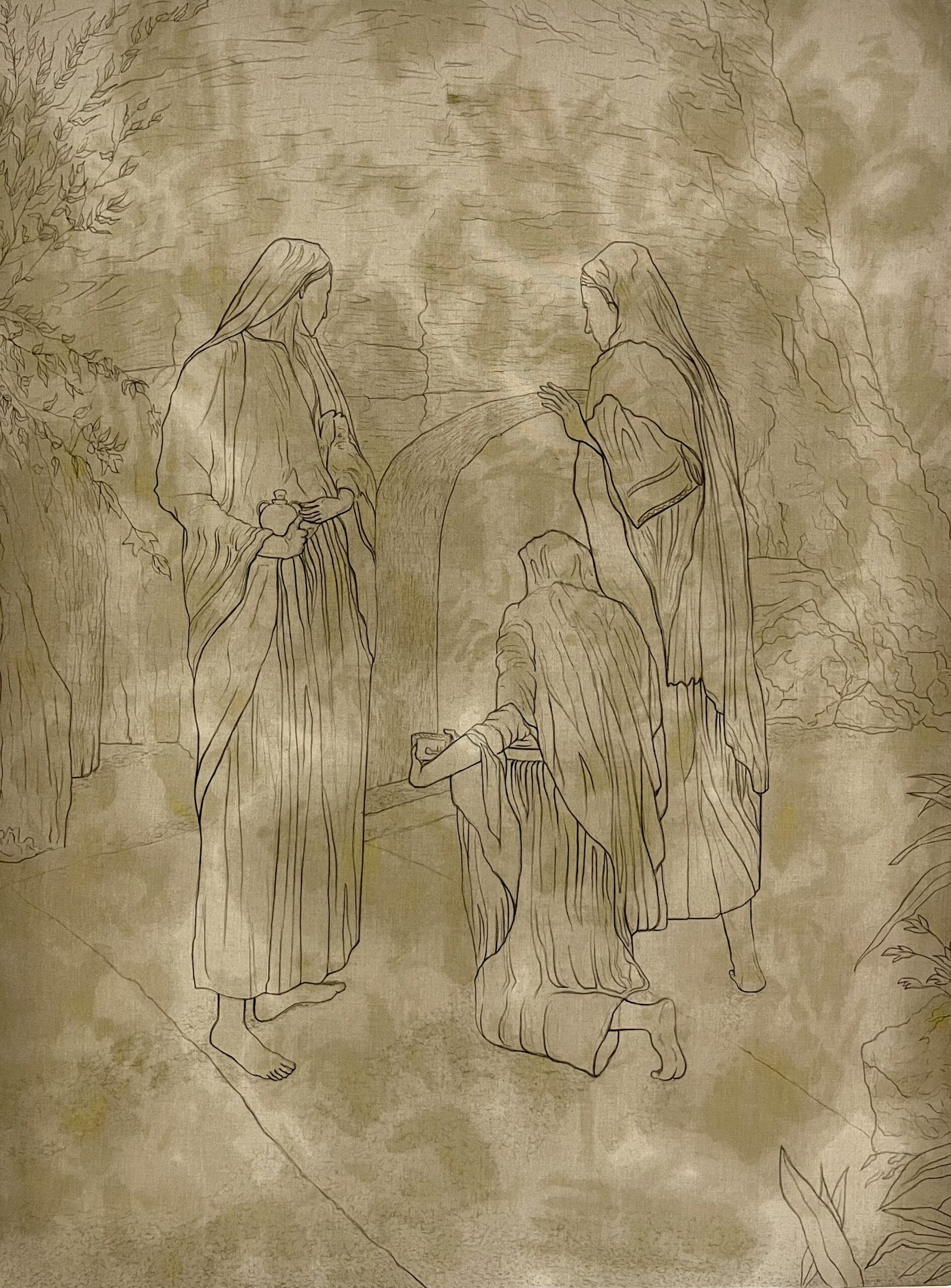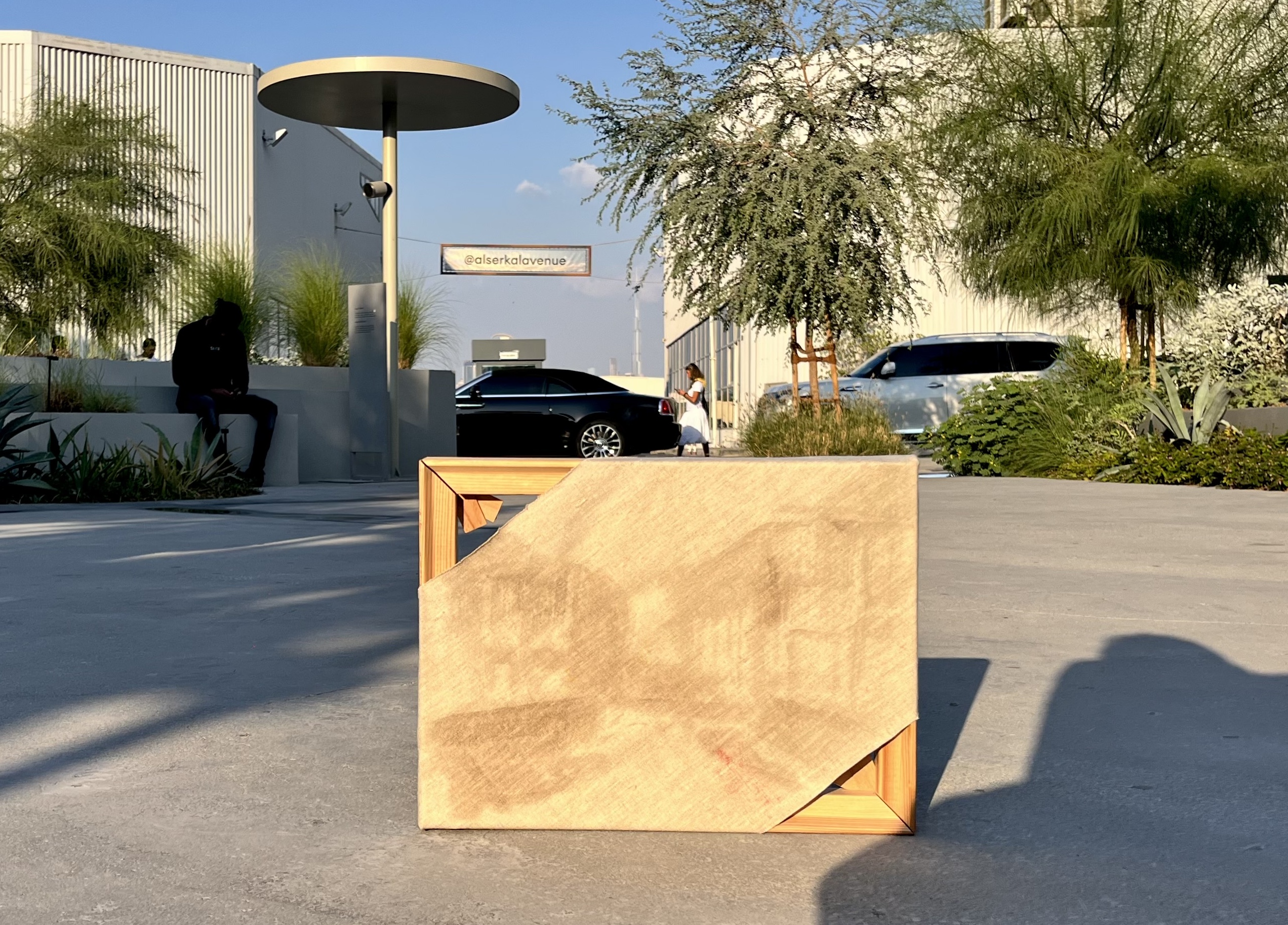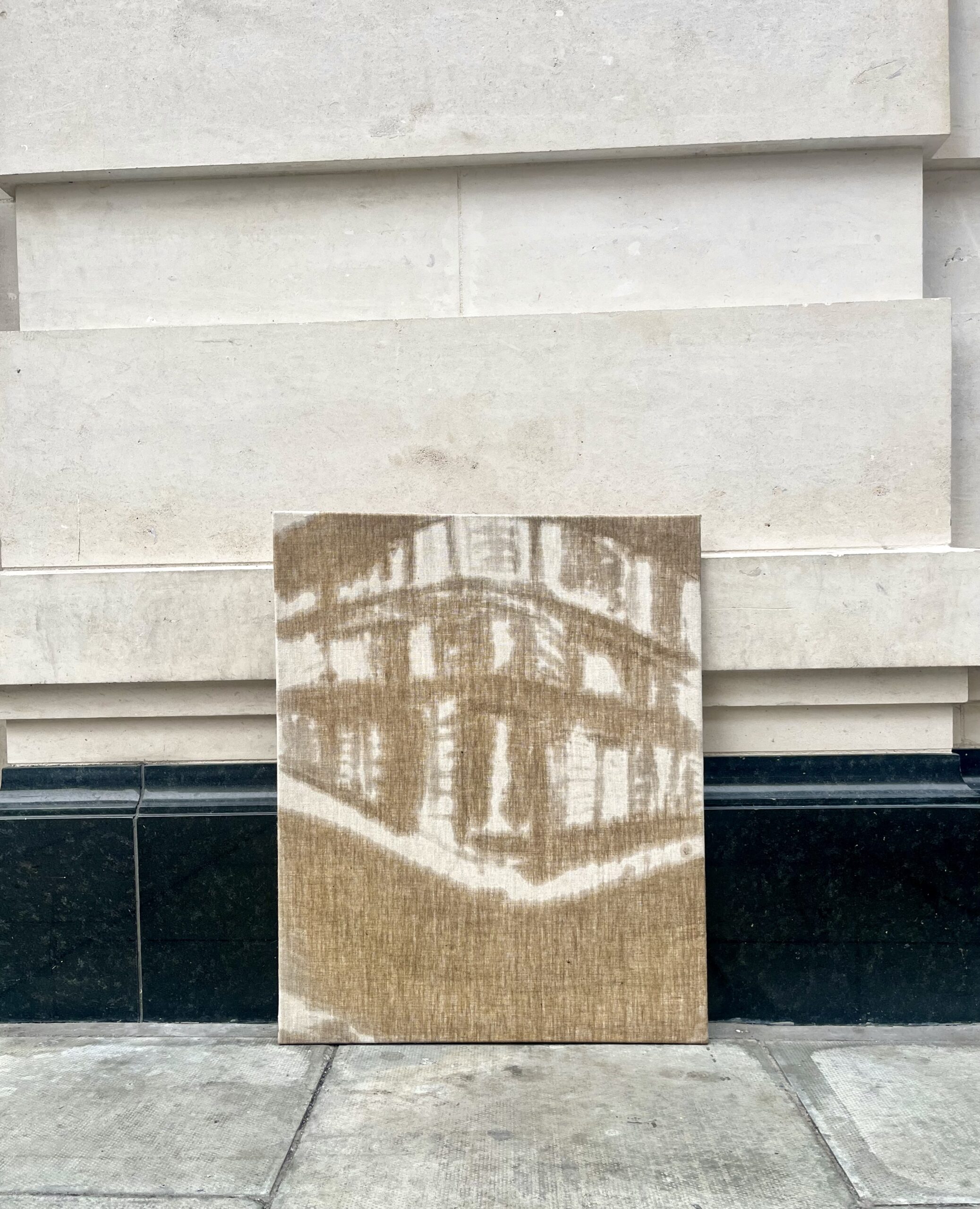Category Art
Published July 12, 2025

Joanna, by Rishi Khurana
In a world where art can be anything and creativity can be sourced from everything, there are still many limitations that bind artists to follow pre-established norms. The roots of ‘what it should look like’ run deep. If the rules are to be broken, they are expected to be broken in a certain way, with a common message of deconstruction in mind.
In this chaotic and often confusing world of artistic practices, an up-and-coming artist, Rishi Khurana, draws inspiration from the rules of the old and the new ways of dismantling them.
“The main inspiration is the opaque nature of the art market, the transactional dynamic, the value generation and the strings of influences that constitute a new form of narratives behind urban power structures and symbols.”
“I create art that transcends the traditional boundary of elitism that surrounds the art world,” he shares.
In his work, Rishi combines art and multi-media to create a fully immersive, well-rounded journey for the observer. In using multiple mediums he provides a bright contextual palette for his work, while questioning the true origin and nature of the mediums he is blending.
“Coming from a traditional figurative painting background, I tend to make works that are experimental, sensory and rich in contextual background, with references to my roots culturally and metaphysically. In my practice, I question the associations with symbols and power structures of the site and how and when that familiarity was collectively subtly conditioned into our individual selves.”
Today’s world of art can often be confusing for those unfamiliar with the decades of history that inspire it. For oblivious observers, it can often feel alienating to try to understand a work while constantly missing a vital piece of information that will put the pieces together. Leaving the art up for interpretation is not always useful, especially in a time when it can convey important messages and give people that precious feeling of being seen.

Dust Painting (Leila Heller Gallery), by Rishi Khurana
Rishi’s use of blended mediums is motivated by context. He wants to make his work known and understood. He does not want to hide the meaning between the lines because what he wants to say is too important not to be given a full story.
“I find the mixed media style to be more appealing because of its nature of making the work more contextually rich.”
“In my recent works, I push this boundary even further by sourcing materials or mediums from the site where the work was going to be made. It not only adds a new layer of narrative and context, but it also adds an association to the site or symbol that brings a sense of familiarity to the spectators.”
“Works like the ‘Dust Painting’ series, 2024, play with this idea of collecting symbolic capital on the ‘discarded canvas’ from dust sourced from each site where the painting was made.”
By creating a context for his process, Rishi gives his work a natural conclusion, a way for the audience to see the work’s journey be complete and connect to it deeper while understanding both the path behind and the final point. By sourcing materials that connect the work to its origin, he further provides a glimpse at the physical point of origin.
For this experimental artist, collaboration comes naturally. Whether it is a collaboration between different distribution sources, art forms, or materials, the final product prompts the audience to feel the work throughout its layers.
“My practice is about the act of creation through multiple hands, a very collaborative practice, whether it’s with creatives or with the spectators of the work that complete the work with their interaction.”

The Script Exchange, by Rishi Khurana
Nowhere is the artist’s intention to reflect the work back onto the process of creation and the traditional ways of distribution more clear than in one of his recent artworks, ‘The Script Exchange’.
The Script Exchange hides nothing. It details the artist’s process of creating the world from start to finish through a series of videos. It then flips the dreaded process of art commodification by addressing it head-on and sharing thoughts on the ways artists are pushed to monetise their work.
The use of timed Instagram posts, artworks sold via social media and concept notes in the form of screen-recorded text messages makes the project incredibly hard to pin down or define. Is it a collection of videos documenting the creation of art? Is it a commentary on the use of social media in the current art landscape? Or is it a multi-media blend of creative and commercial? Perhaps it’s all of them, but most importantly, it is a work that shows that the artist will not be bound by the limitations of access or resources at his disposal; instead, he will be inspired by them.
“I made ‘The Script Exchange’ 2025 Video work—a digital situational performance video art that carries three core elements of my practice: 1. The situational performance, 2. The tangible object that comes out of it, and 3. And the documentation of that happening.”
“I live in London with no studio space or funds to make a new project. Hence, I decided to make a project out of these constraints and create a project that is digital, with parts of it coming out as commodified tangible objects.”
“In this project, social media acts as a medium for its wide reach and its contextual background in the video. In Part 2, I refer to my thoughts as “How will I reach more people? I’m not even a famous artist yet!” And then I proceed to post a trendy song and promote this video. The concept of social media that seeps into this narrative of reaching a wider audience is a reference to this medium being part of our current reality.”
Coming from a background where experimental art is still in its developmental stages, Rishi was always determined to create a project that colours outside the lines of traditional art forms.
Although art can be anything, even that all-consuming anything requires funds to be made into reality. For young artists around the world, the hardest part of realising their vision is finding a way to fund their creativity.
“Coming from India, where the art market is developing, performance, conceptual and experimental art is not a widely accepted medium. Making unconventional art that breaks the traditional boundary comes with its own set of constraints.”
“I learnt that it is going to be difficult to monetise this experimental practice.”
Despite his monetary challenges, Rishi pushed through and used his art to prove to himself and others that a lack of financing can be turned into another source of inspiration.
“You don’t need a lot of funds to create art. The world around you is full of mediums and spaces to create art.. Constraints are the fuel to ignite creativity.”

Dust Painting (Moco Museum), by Rishi Khurana
Rishi continues to prove his ability to draw inspiration from each experience, while carefully breaking them down and finding references that are both personal and universal. As the artist moved to London, his worldview widened and his art began to take on new meanings while keeping true to his experimentally collaborative nature.
“When I first moved to London for my Master’s, my beliefs and opinions were constantly getting shaped by the cultural differences I was facing. Coming from a conservative, close-knit family to living alone on a foreign continent was a big shift for me, and I wanted to make a sculptural artwork to commemorate that familiarity which all of us international immigrants feel.”
“Coming out of home and living independently was a major self-reflection period that made me look at my culture from an outsider point of view.”
Rishi’s latest exhibition, ‘If I Become an Alien?’ takes a new direction, exploring the mutating boundaries of society. It is a reflection of a change in mentality, accompanied by a collection of narratives that form out of our ideas of self.
“My current exhibition, “If I Become an Alien” in Wimbledon is about the collective sculpting of our individual self, an evolutionary cycle of influences that shape our current self, however with each cycle the emergence of an anomaly is inevitable (a black sheep), that creates a new evolutionary cycle or a new normal.
“In my exhibition, I like to talk about cross-cultural dialogue and a collective sense of lived experience through the use of familiarity in my mediums and their sensory elements (the spices from India and the Thames Water from the UK). In a way, the sculpture stands as one unified entity, made up of lived experiences and sculpted from those collective influences.”
Rishi continues to grow as an artist, turning each new day into inspiration for his art. Yet the core of his creativity remains, combining practices, finding deep meanings, and always being ready for a new challenge that can help him discover new, unexpected formats.
“For my future project, I am planning on collaborating with different creatives from different fields to really understand the boundary that categorises an artwork or practice into a particular field.”
“I want to make an artwork that becomes difficult to categorise, a collaborative collective body of work that will push me to unlearn my preconceived norms of what art can be.”
Follow Rishi’s work on Instagram: @rishi___________k01


